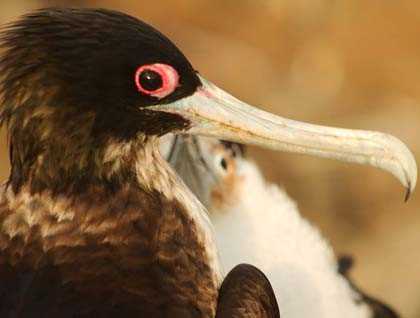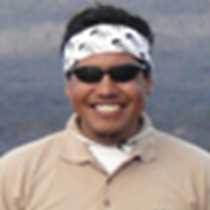Genovesa Island is one of Galapagos’ most Iconic Islands, and today we sensed all its wonders in a delightful visit. A comfortable wet landing at Darwin Bay was the best way to begin our exploration. At the moment of arrival the magnificence of the place got us awe-inspired by the presence of sea birds in the area.
The charm of nature was displayed in a symphony of different sea birds found in the area: swallow-tail gulls nesting, frigate birds flying over us, and red-footed boobies perching on mangroves trees. Farther into the trail, the presence of baby red-footed boobies made a perfect photography moment. A decoration of dormant incense trees with brown lava rocks were the perfect decoration for a spectacular landscape.
Once we reached the farthest point of the trail, we enjoyed a charming view of Darwin’s Bay that made us feel we were in a complete paradise. Once back on board the National Geographic Endeavour, it was time to get ready for our last deep water snorkeling experience. The majesty of the Galapagos Marine Reserve was shown by displaying different reef fish species that were found covering the lava rocks.
In the afternoon our explorations got even better. This time we had the opportunity to sightsee at Prince Philip’s Steps. As soon as we arrived the Nazca booby colony found in that area was so remarkable that we felt we were inside a bird paradise. As we reached the farthest point of the trail, it was time to find one of the rarest birds of the island, the short-eared owl. The biggest surprise of the visit was given by one short-eared owl eating a storm petrel. At the end of the expedition we enjoyed a magical sunset as part of a delightful day in this Galapagos paradise.




